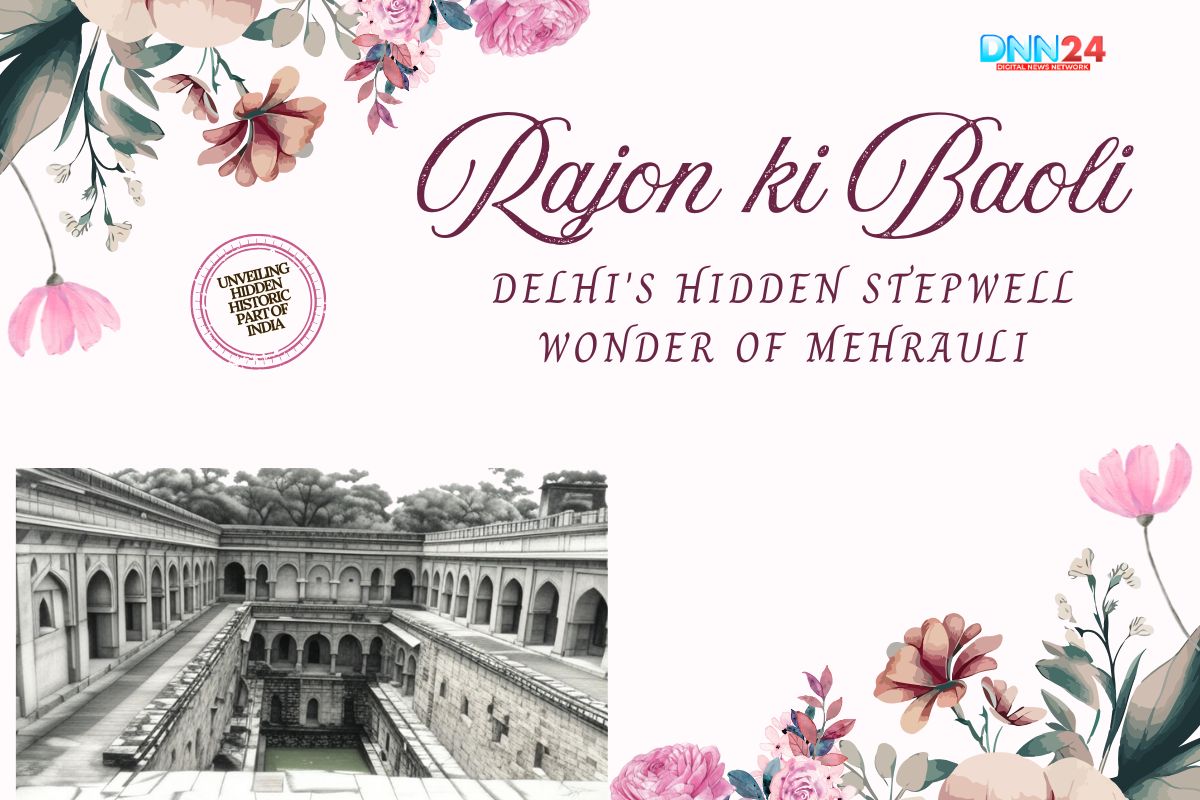Walking through the busy streets of Mehrauli, most people miss one of Delhi’s greatest treasures. Tucked away in the Archaeological Park stands Rajon ki Baoli, a stunning stepwell that has been telling stories for over 500 years. This magnificent structure is a pretty sight and a window into Delhi’s rich past and innovative water management.
This stepwell, built in 1506 during the Lodi dynasty, has a special story. Unlike grand monuments for kings and queens, Rajon ki Baoli was created to honour ordinary working people. “Rajon” means masons, the skilled craftsmen who built Delhi with their own hands. Daulat Khan, a nobleman of that time, dedicated this beautiful structure to these hardworking people rather than any royal family.
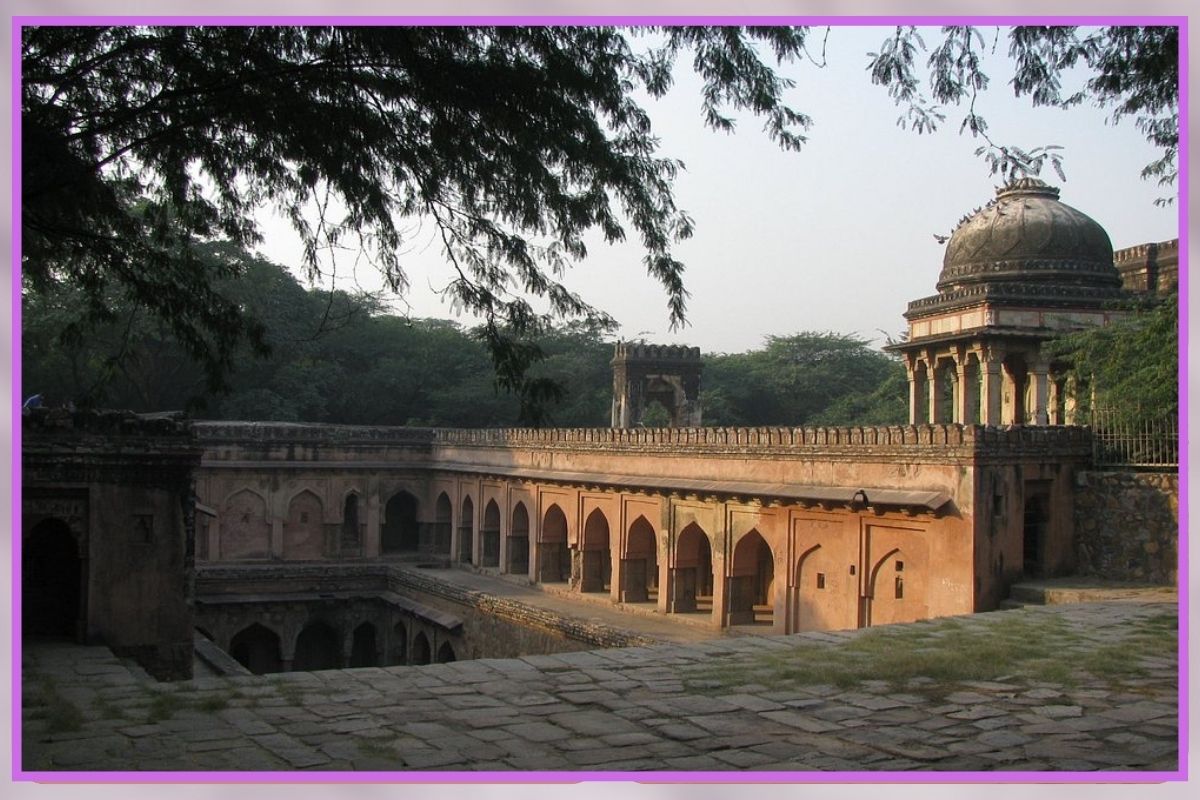
The stepwell goes down 14 meters into the earth with four levels of arched galleries. Each level tells a different story of how people lived and worked centuries ago. The design is so clever that it keeps the area cool even during Delhi’s hottest summer days. Standing inside this architectural wonder, you can feel the temperature drop and understand why our ancestors were such brilliant builders.
The Fascinating Story Behind Delhi’s Most Unique Stepwell
1506 was important for Delhi’s architectural history when Daulat Khan commissioned this extraordinary stepwell. Working under Sultan Sikandar Lodi, he made an unusual choice for his time. Instead of building something grand for the royal family, he celebrated the raj mistris (master masons) who shaped Delhi with their skilled hands.
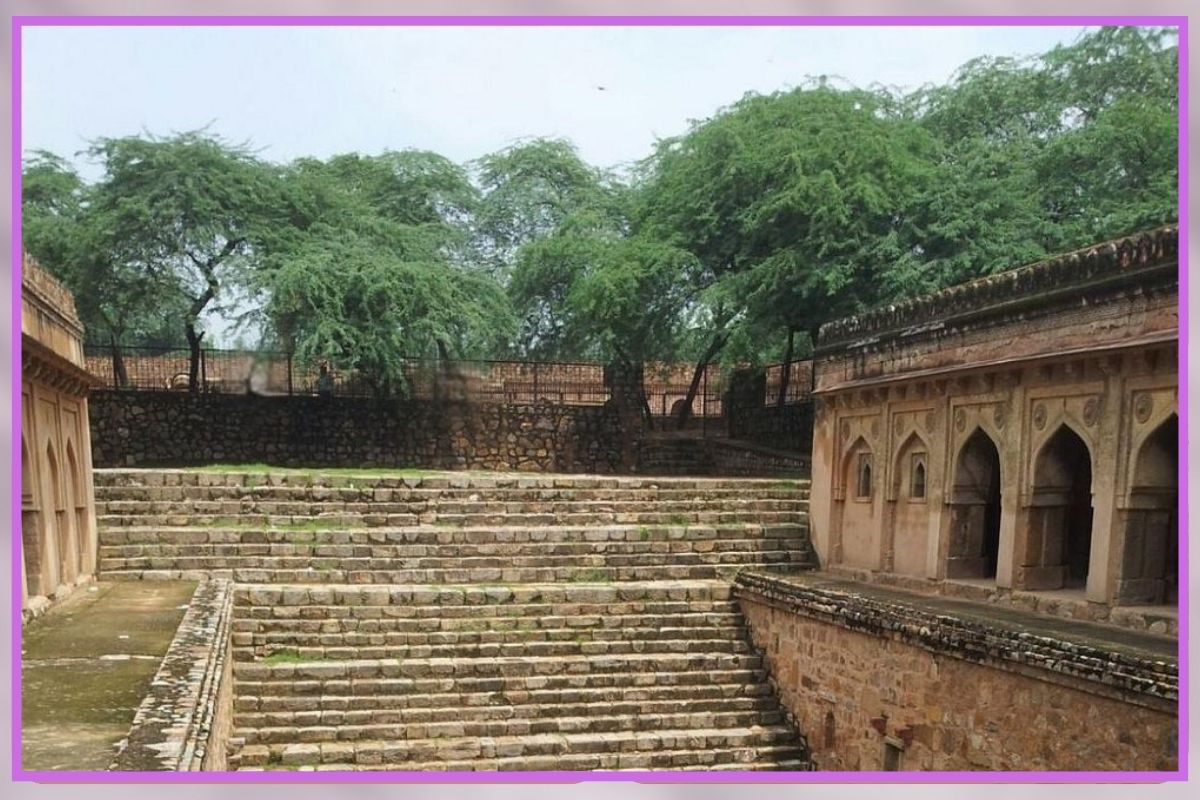
Historical records suggest that Daulat Khan became disappointed with court politics and invested in something meaningful for ordinary people. This decision created one of the finest examples of Indo-Islamic architecture in Delhi. The stepwell features beautiful lime plaster work, intricate designs, and carved medallions that have survived five centuries of weather and political changes.
Rajon ki Baoli was much more than just a water storage facility. It served as the heart of community life where people gathered for various purposes. The four levels provided different spaces for different activities. People came here to collect water, escape the heat, hold religious ceremonies, and share daily news and stories. The upper levels were perfect for meetings, while the lower levels stayed cool and comfortable throughout the year.
Local legends add mystery to this already fascinating place. Old residents tell stories of spirits that live in the incredible depths and strange sounds that echo through the arched chambers during full moon nights. These tales, whether actual or not, show how deeply this stepwell has touched the imagination of people across generations.
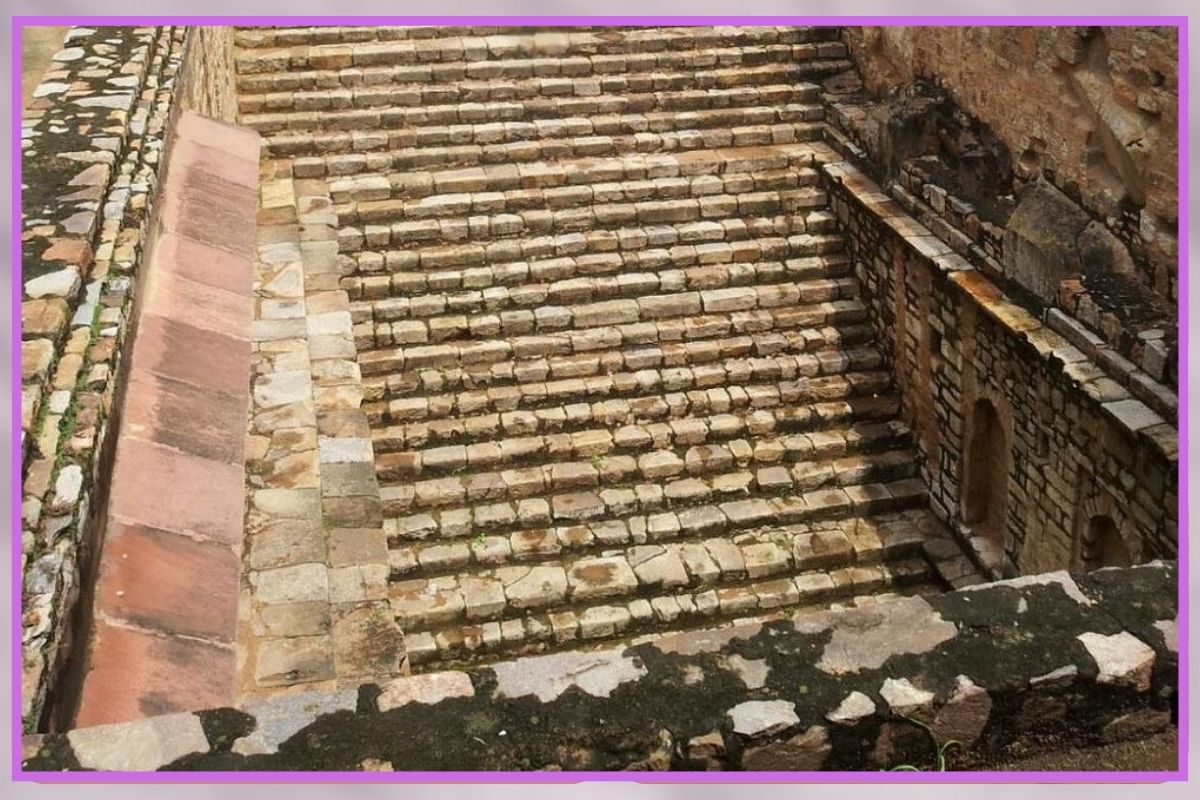
Through centuries of change – from the last Lodi rulers to British colonial rule and finally to modern independent India – Rajon ki Baoli remained a constant presence in Mehrauli, serving the local community and preserving ancient wisdom about water management.
Why This Ancient Marvel Matters for Today’s Delhi
In modern Delhi, where water shortage is a growing concern, Rajon ki Baoli offers valuable lessons along with its historical beauty. The Archaeological Survey of India and World Monuments Fund India completed a significant restoration project in 2025, bringing this heritage site to life as a working example of sustainable water management.
The traditional stepwell design shows us how our ancestors naturally collected rainwater while creating cooling systems through underground architecture. Urban planners and architects now study such structures as environmentally friendly alternatives to modern water infrastructure. They appreciate how these ancient systems combined practical use with environmental benefits in ways that modern buildings often fail to achieve.
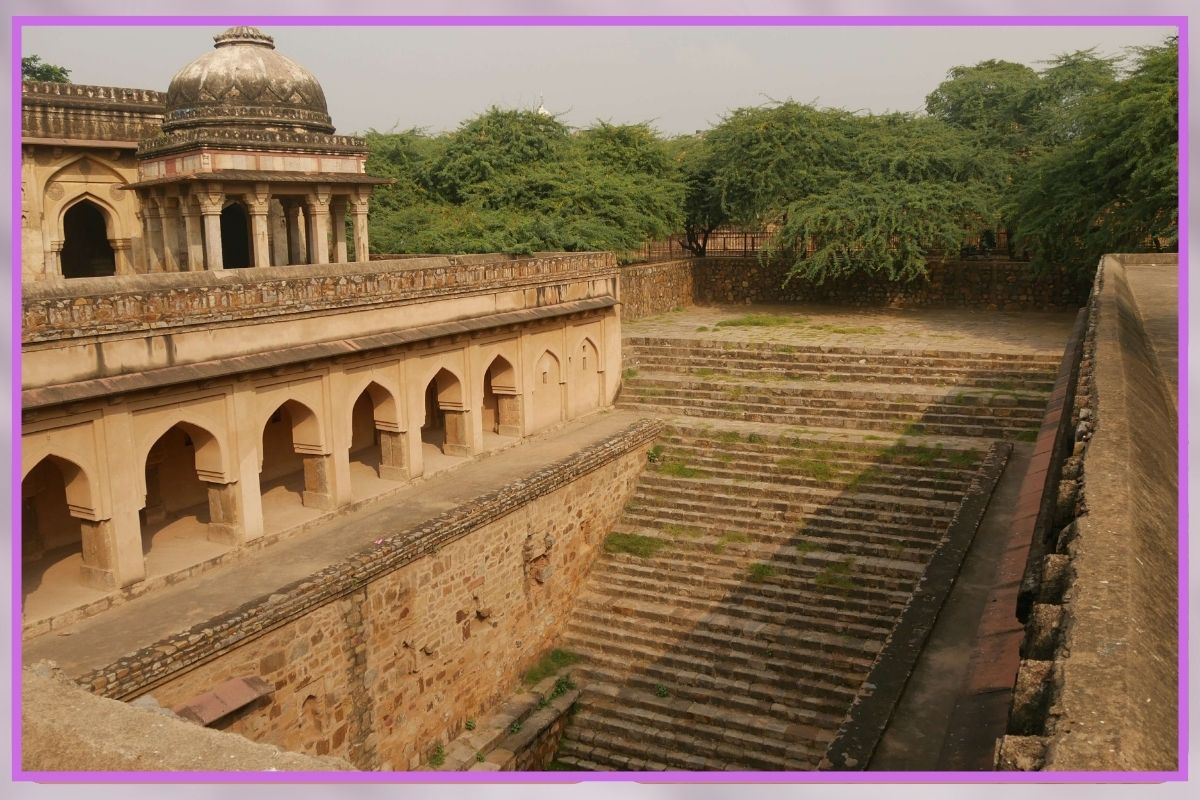
After restoration, the baoli once again holds clean water with fish that help maintain the ecosystem’s natural balance. This proves that traditional knowledge can successfully address contemporary problems. The site has become a learning centre where school children come to understand water conservation, traditional architecture, and thoughtful city planning from centuries ago.
Photography enthusiasts discover perfect shots in the geometric patterns of shadows and light reflecting off the water. The symmetrical arches and layers create natural frames that change throughout the day as the sun moves across the sky. Cultural heritage walks bring visitors to experience Delhi’s history while learning practical lessons about adapting to climate challenges.
Residents see the restored baoli as proof that sustainable solutions often exist in our historical practices, waiting to be rediscovered and applied to modern problems. Policy experts and urban planners now reference Rajon ki Baoli when discussing heritage-based approaches to current urban challenges like water scarcity, heat island effects, and building stronger communities.
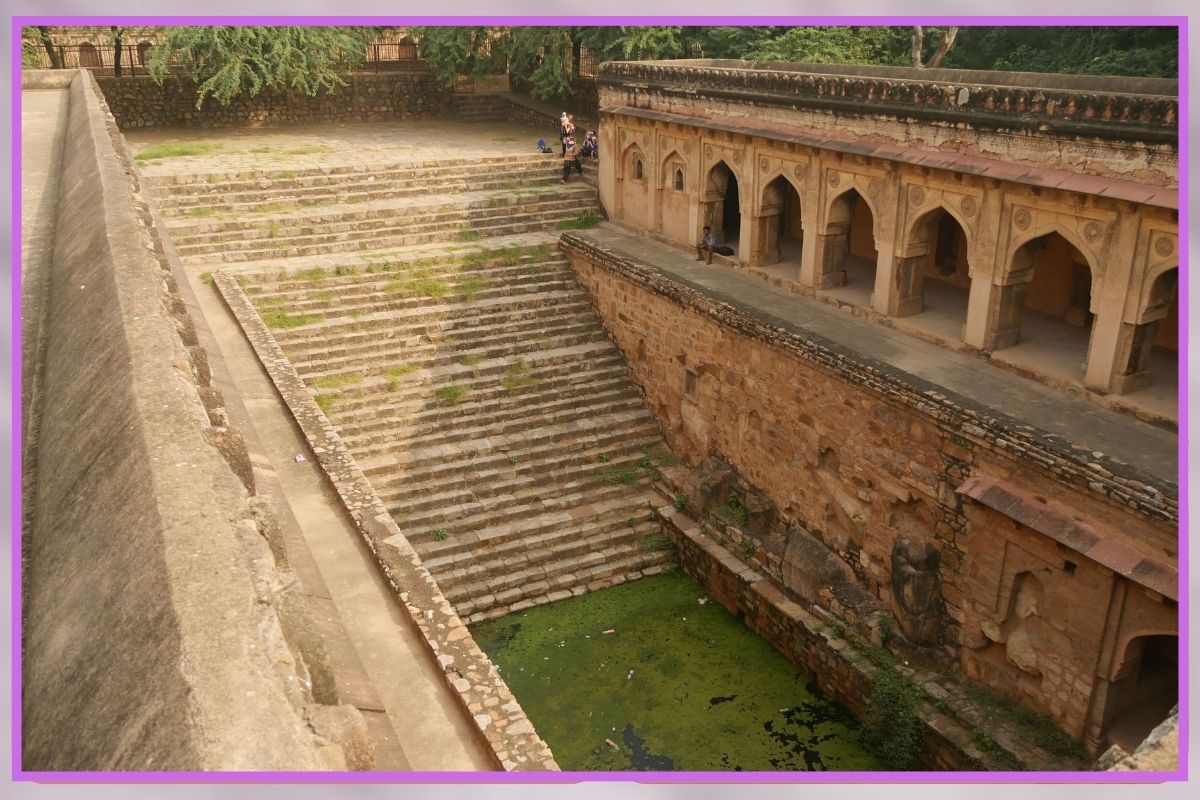
This ancient stepwell has become a symbol showing how respecting and learning from traditional knowledge can guide us toward better environmental solutions, making it highly relevant for Delhi’s sustainable future development.
Cultural Stories and Modern Impact of This Living Heritage
Rajon ki Baoli continues to inspire contemporary storytellers, artists, and cultural enthusiasts who find deep meaning in its enduring presence. Young historians write research papers about its social significance, while environmental experts study its natural cooling and water management systems. Poets create beautiful verses celebrating their quiet beauty and the stories they hold within their stone walls.
The stepwell regularly appears in modern blogs, documentaries, and creative writing that blend historical facts with local legends about mysterious voices echoing through its chambers. Mehrauli residents fondly share childhood memories of playing near its edges and listening to their grandparents recount tales of the skilled masons who built this wonder.
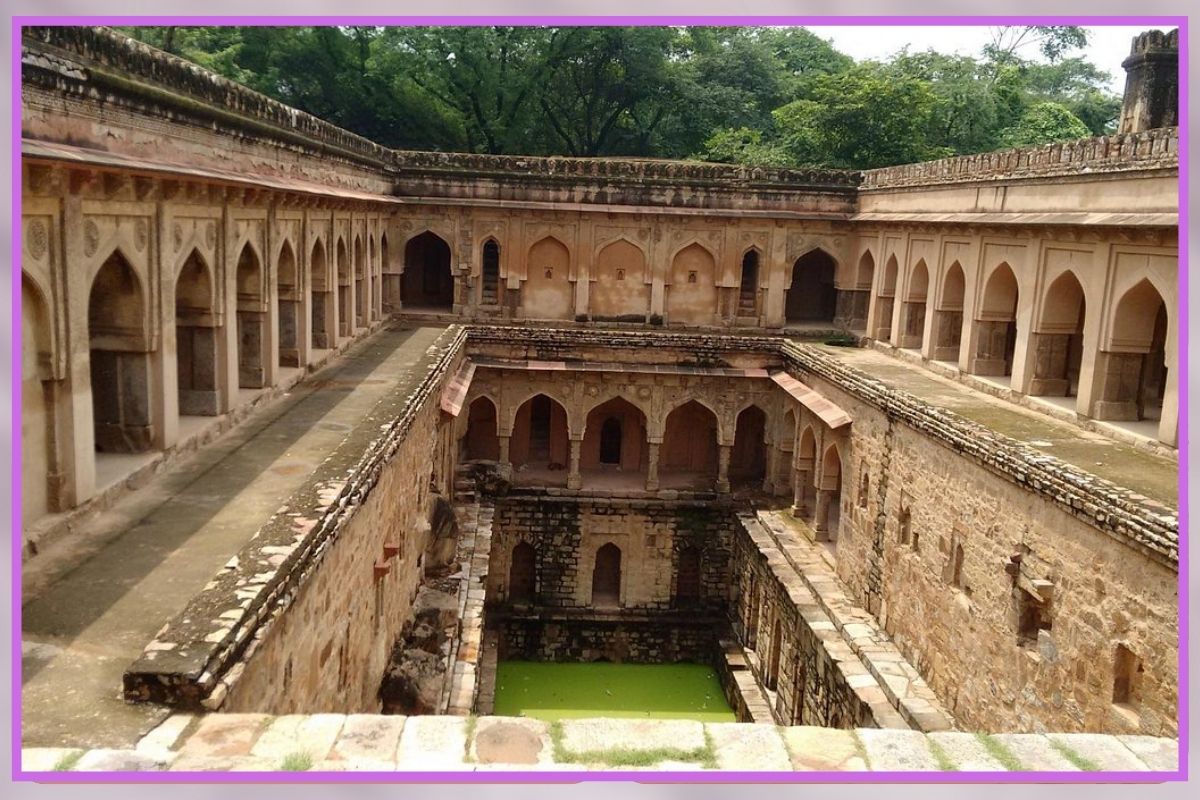
Film directors choose their atmospheric setting for period movies, while artists spend hours sketching their perfect proportions and the beautiful play of light and shadow throughout the day. School projects often feature the baoli as students learn about Delhi’s architectural heritage and traditional water management systems far ahead of their time.
Conservation groups use Rajon ki Baoli as a shining example of successful community-driven heritage preservation. It demonstrates how local people working with government agencies can bring forgotten monuments back to active life. Social media has significantly spread awareness about this hidden gem, with visitors sharing photographs and experiences that inspire others to explore Delhi’s lesser-known treasures.
The stepwell has also become a peaceful meditation spot for people seeking quiet moments in the busy city. It is a gentle reminder that sometimes the most meaningful experiences come from slowing down to appreciate simple, enduring beauty that has touched countless lives across centuries.
In a Delhi that rushes toward the future, Rajon ki Baoli asks us to pause, respect our past, and learn from our ancestors’ practical wisdom in stone, water, and community spirit.
Also Read: Quwwat-ul-Islam Mosque: Delhi’s First Mosque Built in 1193 AD
You can connect with DNN24 on Facebook, Twitter, and Instagram and subscribe to our YouTube channel.

